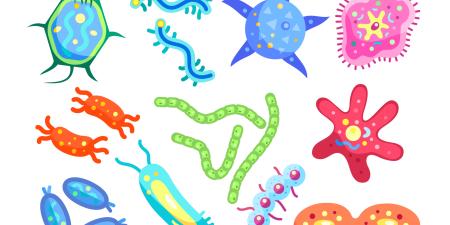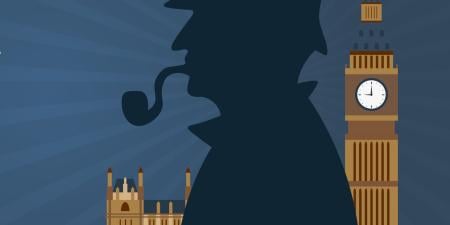Case
“I wonder if we’ll get any more flu patients today?” thought Melissa, a fourth-year medical student in the middle of her emergency medicine clerkship. The large urban medical center affiliated with her medical school had already admitted 34 cases of a variant strain of influenza in the last 2 days. Across the city an estimated 250 people had become ill during the past 2 weeks, with the mortality rate hovering just below 20 percent. In an effort to control the spread of the deadly virus, both the state public health department and local medical centers were cooperating with strict quarantine procedures for individuals exposed to known carriers. Local news stations encouraged people to remain home, while medical personnel with known patient exposure were restricted from leaving their hospital or clinic until after a 24-hour observation period. Although Melissa had not yet come in contact with anyone later determined to have an active infection, she couldn’t help but wonder about each new patient she examined.
Later that morning, Melissa’s supervising resident directed her to a patient complaining of persistent abdominal pain. “His symptoms don’t match with the flu,” she told Melissa, “so I don’t think you need the isolation mask and gown.”
Five minutes into the exam and history, Melissa could feel her pulse start to quicken. Mr. McIntyre may have come to the ER with abdominal pain, but now he was starting to complain of a headache and nausea accompanied by an elevated temperature of 100.2° that just 3 hours earlier had been 98.4°. Growing more and more nervous, Melissa immediately went to find Dr. Martin, her supervising resident.
“He was in the waiting room for how long?” Dr. Martin asked in despair, after the team promptly admitted Mr. McIntyre with what was determined to be another case of influenza. “Three hours? We’re going to have to quarantine everyone who was there!”
Accompanied by Dr. Walker, the attending physician for the team, Melissa and Dr. Martin made their way to the corner of the waiting room where the triage nurses had assembled the 12 people who had been exposed to Mr. McIntyre. After calmly explaining the situation and the necessary 24-hour quarantine, Dr. Walker asked if anyone had any questions.
“Yeah, I’ve got one,” a large man with a swath of bloody gauze wrapped around his forearm snarled belligerently. “I’ve been bleeding all over the floor for an hour and now you’re telling me I can’t leave? I only saw that sick guy for 5 minutes!”
“I’m sorry sir—” Dr. Walker began before he was cut off.
“I don’t believe this,” the man cut in. “This is such garbage. I’m supposed to be at my kid’s soccer game tonight and then I work the night shift. What do you want me to do about that?” he asked before stalking away towards the bathrooms.
Six hours later, as Melissa walked towards the cafeteria, she realized that Nick—she learned his name after spending half an hour stitching shut the cut on his arm—was following her, occasionally looking over his shoulder towards the triage station. “Excuse me,” he said quietly, glancing over his shoulder again. “I’m really sorry about before—I didn’t mean to get so upset. It’s just that I have so much to do today and I promised my son I’d make it to his game. I’ve…well, I’ve missed the last 3.”
“Oh, that’s okay,” Melissa said. “I can understand why you’d be upset.”
“But honestly, I don’t have that flu,” Nick replied. “I feel fine, I don’t have a fever or any of those other things they keep talking about on TV, and that sick guy went into the back right after I sat down. Seriously. Five minutes later. You were so nice about doing my stitches—can’t you help me out here? I really need to be at this game and I’ve been here for almost half the quarantine time. I could just walk out the side door and they’d never even notice I’m gone. Please don’t say anything,” he begged, glancing once more down the empty corridor and edging towards the door. “I’m fine, honest.”
Commentary 1
In this clinical scenario, both Nick and Melissa have suddenly been thrust into pivotal roles in a public health crisis. Nick is filled with anger, confusion, and frustration. He has been imprisoned and he does not understand why. Until this moment Melissa has been a patient advocate and a representative of the emergency room physicians; now she has been transformed into a deputy of the public health system. Her new role supersedes her previous roles—but it does not release her from her traditional obligations to her patients. State and federal public health officials have deemed the variant influenza an emergency warranting quarantine in her city. Melissa must obey the rules of quarantine, communicate the urgency of the situation, and engender the cooperation of the quarantined.
In addition, however, Melissa has had close contact with the ill patient and must be quarantined herself. She may be experiencing many of the same feelings as Nick, the man with the bleeding arm. Ultimately, sharing her understanding of the situation and her own feelings about it may be a key to enlisting the cooperation of the quarantined individuals.
Considering Isolation versus Quarantine
Melissa should first understand the difference between 2 distinct concepts, isolation and quarantine. In previous eras, these concepts were used interchangeably. The modern definition of isolation is the physical separation of persons with the active contagious disease. We use isolation on a day-to-day basis in the hospital—for example, in the case of patients with methicillin-resistant Staphylococcus aureus, with suspected bacterial meningitis, or with possible untreated pulmonary tuberculosis.
Quarantine, in contrast, is the physical separation of healthy individuals who appear to have been exposed to a person with active contagious disease [1,2]. To minimize ongoing risk of infection, the quarantined are removed from those with active infection. For quarantine to be an effective tool, 2 factors should be involved in the underlying biological basis of the disease in question: (1) the disease process appears to be contagious and (2) there appears to be a reproducible incubation period. If individuals under quarantine remain healthy beyond the presumed incubation period, the quarantine should be lifted for those persons.
Quarantine has been a technique used to contain infections since before the existence of the germ theory of disease. The 2003 outbreaks of severe acute respiratory syndrome (SARS) in China, Hong Kong, Taiwan, Singapore, and Toronto revealed that quarantine can be an effective tool to halt infection in modern societies. Furthermore, quarantine is an integral part of public health plans for future outbreaks of potential emerging infectious diseases and some acts of bioterrorism such as release of smallpox virus.
The Challenge of Quarantine
After understanding the meaning of quarantine, Melissa should recognize how invoking it may pit 2 primary values against each other—personal autonomy and public welfare. In addition, Melissa should recognize the sudden (albeit temporary) supremacy of the public welfare needs. Normally our society upholds autonomy, the right of the individual to determine his or her actions, as a supreme value—unless there is a risk of harm to others. As a medical student, Melissa recognizes the right of a patient to refuse hospital admission despite severe pneumonia, to ignore her recommendations to stop smoking tobacco, or to choose not to fill a prescription for hypertension. It is her obligation to communicate the importance of her recommendations in a manner that the patient can understand; ultimately, however, the decision of whether or not to comply rests with the adult patient. Thus Melissa respects Nick’s autonomy.
In most patient-physician relationships, the value of public welfare plays a minor or even nonexistent role. When federal and state public health authorities proclaim quarantine within a region, however, the public welfare is at grave risk. These officials have deemed the situation a public health emergency involving a contagious infection. In such a situation, the needs of the community temporarily supersede individual rights and freedoms. The unusually high mortality rate during this outbreak in Melissa’s city clearly reaches the threshold of a public health emergency.
The Physician’s Response
As she recognizes the sudden, unbalanced tension between the needs of public welfare and those of personal autonomy, Melissa should act decisively and immediately. She should act as an extension of the public health system to prevent Nick from leaving the hospital. Because this patient has previously been belligerent, Melissa may need to ask security personnel to intervene. With assistance, she may be able to use her prior relationship with Nick to re-establish rapport and thereby prevent Nick’s departure.
Once Nick returns, it is Melissa’s obligation to address the needs of all her patients, the quarantined [3]. Research during the SARS outbreak in Toronto revealed that those who were quarantined commonly described feelings of isolation, uncertainty, desperation, powerlessness, and fear of illness and loss of income. What appeared to engender cooperation and coping were: clear, consistent information from health care workers, an understanding of the purpose of quarantine, clear expectations about behavior, and reassurance that immediate needs would be addressed [4]. It is important for members of the quarantined group to realize that being sequestered may keep their own families safe and that, by being removed from the clinically ill, they’ve lessened their own risk of acquiring influenza. As a medical student and a quarantined individual herself, Melissa is uniquely poised to communicate and reassure. Her ability to form a bond with the quarantined individuals will help them cooperate with this imposed separation.
In conclusion, during a public health crisis, the balance shifts from favoring individual rights to protecting the health of the community. In the situation of quarantine, each individual physician’s role is to engender cooperation by communicating clearly and by acknowledging the natural fears and feelings of powerlessness that infectious disease outbreaks create.
References
-
Gostin LO, Gravely SD, Shakman S, Markel H. Quarantine: voluntary or not? J Law Med Ethics. 2004;32(4 Suppl):83-86.
- Barbera J, Macintyre A, Gostin L, et al. Large-scale quarantine following biological terrorism in the United States: scientific examination, logistic and legal limits, and possible consequences. JAMA. 2001;286(21):2711-2717.
- Lo B, Katz MH. Clinical decision making during public health emergencies: ethical considerations. Ann Intern Med. 2005;143(7):493-498.
- Cava MA, Fay KE, Beanlands HJ, McCay EA, Wignall R. The experience of quarantine for individuals affected by SARS in Toronto. Public Health Nurs. 2005;22(5):398-406.



